MONTAGNARDS
"mountain
people"
INDEX
September 19, 2002 EDITORIAL - THE WASHINGTON TIMES
February 23, 2002 - Vietnam, Cambodia set deadline for repatriating Vietnamese refugees
September 28, 2001 - Stiff jail terms mandated for saboteurs of public security
July 17, 2001 - Trouble in the Highlands
October 1969 TYPHOON magazine article
LINKS - Current news and information
Montagnards
were sometimes referred to as:
"America's most loyal allies in Vietnam"
Those of us who served in and around the Central Highlands will probably never forget those mountain people. Their neatly arranged villages with hooches on stilts, their capital of Ban Me Thout, and their unique wares such as; Montagnard bracelets, woven fabrics and other handcrafted items.
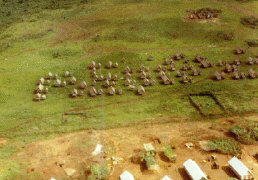
Montagnard village
next to FB Blackhawk
Houses on stilts, neatly arranged
Photo: 15th webmaster
We knew back in 1971 that the Montagnards and the Vietnamese didn't get along with one another. The Montagnards disliked the Vietnamese who regarded the Montagnards as "moi" (savages).
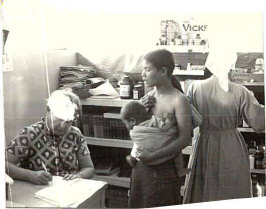
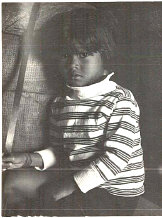
Montagnard
patients in 1971 at a Kontum hospital
run by Dr. Pat Smith of Seattle, WA
Courtesy
of:
Pat Costello
Tribes included the Hre, Rhade, Cham, Tuong, Mien, Jarai, Bahnar, Mnong, Sedang, Haland, Ragulai, Rongao, Bong, Nongao, Koho, Ma, Chil and Drung.
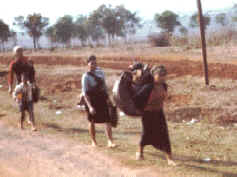
Montagnards walking along a
road near Pleiku in 1971
Photo:
15th webmaster
EDITORIAL
September 19, 2002
THE WASHINGTON TIMES
The Montagnards
This
Saturday, protesters will gather outside Vietnamese embassies in several cities
around the globe, including Washington, to protest that government's human
rights abuses, particularly with respect to the Montagnards.
Those indigenous, largely Christianized tribal
people from Vietnam's central highlands were true friends of American soldiers
during the Vietnam War, and they paid a terrible price. More than 50 percent of
adult Montagnard males were killed alongside American soldiers during the
Vietnam War.
The Montagnards have continued to suffer arrests,
imprisonment, torture and religious persecution since the Americans left. Last
April, Human Rights Watch released a 200-page report detailing the Vietnamese
government's repressive activities. On one occasion, in March 2001, hundreds of
troops entered the village of Plei Lao to break up an all-night prayer meeting.
They stayed to shoot a villager and ransack the church.
The Vietnamese government's policy of forced
sterilization of the Montagnards has been written about by Scott Johnson, a
lawyer based in Perth, Australia and a human rights advocate for the Montagnard
Foundation in South Carolina. That foundation has documented more than 1,000
cases of women who were forcibly sterilized. More shockingly, the Vietnamese
government has admitted that it implemented such a policy.
Montagnard repression has been especially brutal
since the U.S. government granted asylum to a group of more than 800 Montagnard
refugees earlier this spring, according to Kay Reibold, director of the Vietnam
Highlands Assistance Project for Lutheran Family Services in the Carolinas,
whose organization has given shelter and assistance to many of those refugees.
Mr. Benge has also received horrifying accounts of the Vietnamese government's
crackdown. In mid-July, agents of the Vietnamese government allegedly captured
and mutilated (cut off the men's achilles tendons and the women's breasts) a
group of about 60 Montagnards in the Gia Lai provence. Other witnesses told Mr.
Benge of seeing between 50 and 60 mutilated bodies along a riverbank in
Montagnard territory earlier this month. While such stories are impossible to
confirm since the Vietnamese government has shut down access to Montagnard
regions, they do fit into the Vietnamese government's well-documented pattern of
human rights abuses.
Montagnard activists hope that the Senate will
find time on its calendar to pass the Vietnam Human Rights Act. It would deny
non-humanitarian aid to the Vietnamese government unless it ended its repression
of the Montagnards. It passed the House more than a year ago by a 420-1 margin,
but has been held up in the Senate, reportedly at the behest of Massachusetts
Sen. John Kerry and Arizona Sen. John McCain, who fear that the bill will
actually weaken human rights activists and democratic reform.
There's no doubt that Vietnam's government needs
democratic reform. But while waiting for that to happen, the U.S.
representatives should insist that the Vietnamese government stop its brutal
persecution of America's friends in the Vietnamese highlands.
Vietnam, Cambodia set deadline for repatriating Vietnamese refugees
February 23, 2002
HANOI, Vietnam (AP) - Vietnam and
Cambodia have set a deadline for the repatriation of more than a thousand
Vietnamese hill tribe members who fled into Cambodia after a crackdown on
anti-government protests, official reports said Saturday.
Vietnamese officials visited the
refugees in U.N.-supervised camps in Cambodia and told them they would not be
punished if they returned, the official Vietnam News Agency said.
It quoted Foreign Ministry
spokeswoman Phan Thuy Thanh as saying the delegation also met with Cambodian
officials, and the two countries agreed to complete the repatriation by the
start of the rainy season, which usually begins in May.
Well over a thousand members of
Vietnamese ethnic minority groups called Montagnards have fled across the border
into Cambodia from Vietnam's Central Highlands since protests a year ago over
land issues and restrictions on their Protestant faith.
A first group of 15 returned home
last Tuesday under the auspices of the U.N. High Commissioner for Refugees,
leaving 1,032 still in the Cambodian camps.
The two countries and the UNHCR
agreed on Jan. 21 that all repatriations would be voluntary, and that the UNHCR
would make pre- and post-return visits to the refugees' villages.
Vietnam has been unhappy about the
slow pace of the repatriation, and has accused the UNHCR of being influenced by
U.S. diplomats in Cambodia who have urged that the repatriation not be conducted
hastily.
"With goodwill and the desire
to welcome back the ethnic compatriots temporarily living in Cambodia, Vietnam
agreed with Cambodia to continue promoting cooperation between the two countries
and the UNHCR to complete the repatriation of these people as soon as possible,
at least before this year's rainy season," Thanh said.
Vietnam's Communist government says
most of the refugees were tricked or coerced by outsiders into fleeing.
Foreign journalists were allowed to
visit the Central Highlands on a government-organized tour this past week for
the first time since a tightly restricted trip 11 months ago.
The journalists were given more
freedom this year to talk with villagers, although plainclothes security agents
stood nearby in all of the villages visited.
Several of the returnees said they
had fled because of fears of government reprisals against their banned
Protestant faith, called Dega Protestantism. The government, which allows only
approved religions, says the founders of Dega Protestantism want to create a
separate state for hill tribe members.
In one village, local officials
forced families of refugees to stop talking to the reporters after the families
said they were worried their relatives would be punished if they returned.
An official newspaper on Saturday
accused the foreign journalists of distorting the situation in the Central
Highlands in their reports.
"It's obvious that reporters
of some Western news agencies came to Vietnam and to the Central Highlands not
to find the facts here, but with an already planned agenda," it said.
Stiff jail terms mandated for saboteurs of public security
September 28, 2001
HA NOI — The People’s Court of
Dac Lac Province has handed down stiff prison sentences ranging from to six to
11 years on seven people for undermining public security in Buon Ma Thuot City
last February.
The defendants found guilty were
backed by hostile forces including remnants of the United Front for Liberation
of Oppressed Races (FULRO) living in exile in the United States with Ksor Kok
and Y Mut Mlo as ring-leaders, the procuracy contended.
Ksor Kok and Y Mut Mlo worked with
Y Nuen Bya, Y Rin Kpa, Y Nok Mlo, Y Phen Kso, Nay D’ruc, Y Tum Mlo and Y
B’Hiet Nie Kdam to form a reactionary organisation in an attempt to set up the
so-called "independent Dega state" in the Tay Nguyen (Central
Highlands). They also planned to found the "Dega Protestant sect"
detached from South Viet Nam Protestant Church.
On February 2 and 3, they lured and
incited thousands of ethnic minority residents from the districts of Ea Sup, Ea
H’Lleo, Buon Don, Krong Knang, and Krong Buk to demonstrate on the streets in
Buon Ma Thuot.
They put forth many absurd demands,
including the formation of an "independent Dega state," and their
moves caused social disorders and hindered normal activities of State offices
and ordinary people in the city and its vicinities.
On February 5 and 6, they staged a
demonstration in Ea H’Leo district town and some of them, including Nay
D’Ruc and Y Phen Ksor, raided local State offices, opposed State employees and
destroyed public property.
The demonstrations, which caused
political instability in the district for several days, was part of the
"peaceful evolution" scheme hatched by anti-Viet Nam forces, the court
said.
The offenders admitted their
violations of law to the court and pleaded for leniency.
The court sentenced Y Nuen Bya, Y
Rin Kpa, Ynok Mlo to 11, 10 and eight years in prison respectively, while Nay
D’ruk and Y Phen Skor got seven years each. Y B’Hiet Nie Kdam received six
years and Y Tum Mlo will spend eight years and four months in prison. — VNS
Vietnam to Send Extra Police to Troubled Highlands
July 17, 2001
HANOI (Reuters) - Vietnam's public security minister plans to send extra police to a province in the volatile Central Highlands, where members of minority hill tribes staged protests over land and religious rights in February and March.
The official Cong An Nhan Dan (People's Police) newspaper quoted Le Minh Huong on Tuesday as saying after an inspection tour that the police were needed in Kontum province as reinforcements, but gave no reason for the move.
Huong urged the local police force to do a better job to solve "problems at grass-roots level" and prevent "sudden situations and hot spots in rural areas."
Large numbers of minority hill people protested over land and religious rights in highland provinces in February and March in the worst unrest to hit communist Vietnam in years.
The rattled authorities sent in large numbers of police and troops to restore order.
The paper said Huong was told in Daklak and Gia Lai provinces that local authorities had stabilized the situation and defused "plots and activities of extremists who took advantages of religion and ethnic minority issues to cause disturbances."
Former U.S. ambassador to Vietnam Douglas "Pete" Peterson, who left Vietnam on Sunday, gave a mixed report last week after making a fact-finding tour of the highlands. He said the provinces of Lam Dong and Daklak were "clearly focused" on finding solutions to problems caused by large-scale migration into ethnic minority areas and economic, social and political marginalization of indigenous people.
He added that Gia Lai was following a "misguided" policy of focusing on security rather than such problems.
Hundreds of minority people fled the crackdown to Cambodia and 38 were permitted to resettle in the United States, a decision that angered Hanoi. Around 400 remain in Cambodia.
Hanoi has said they would not be punished if they returned under a U.N. voluntary repatriation plan, but U.S.-based activists who visited Cambodia on a fact-finding mission last week said they should not be sent back due to safety concerns.
State media earlier this week quoted Prime Minister Phan Van Khai as telling a government meeting in Daklak province last week that more farm land and investment for ethnic minorities should be provided in the highlands.
The following story appeared in the October 1969 issue of TYPHOON magazine. The TYPHOON was published by First Field Forces Vietnam (IFFV) of the US Army Vietnam (USARV).
Looking like their fathers of
1,000 years ago, the
Montagnards are riding out
of the past. They are sure that
Their
Time Has Come
By 1LT Roy C. Russell
In the Highlands near Gia Nghia, lives a pretty Montagnard girl, lithe with delicate features and black hair that streams out over the back seat of her jeep when she lets it blow in the wind. If you are a friend, she calls you grandson (though she is only 27), and she will get you discount prices on Ba Muoi beer at the local bar.
But say the Montagnards are savages, and the flash in her eyes says she would like to come at you with anything from a M16 to a crossbow. Say they are nomads who should not own land, or say they are too ignorant for schools, to superstitious for hospitals, and too primitive to make good soldiers, and she will erupt with the torrent of rebuttals that would scare the Black Panthers.
She can talk to you in French, Vietnamese, several Montagnard dialects, and English. "Where did you learn these?" you ask.
"In the forest," she answers, and her eyes twinkle just long enough to accent the mystery that surrounds her. "You know I am 107 years old. That is long enough to learn many things, but I am still a Montagnard."
She represents a new generation of Montagnards, proud of its past, but demanding a modern role in the future of the Highlands. You can help a village sacrifice a water buffalo by beating it to death with sticks and rocks. You can watch a woman plant rice by poking small holes in the ground instead of plowing it up and disturbing the spirits. You can sit through hot afternoons drinking ricewine inside smoke-filled longhouses which have not changed for centuries. You can imagine you are living a thousand years ago. But when the talk turns to politics, you know you are in the 20th Century. The Montagnards know what time it is, and a variety of groups -- some militant, others peaceful -- are making sure no one else forgets.
For generations, the Montagnards have lived in the Highlands, unconcerned about the Vietnamese along the coast. The feeling was mutual because Vietnamese fishermen and rice-farmers had no reason to leave the lowlands. Traditionally separated, the two groups viewed one another with suspicion and, eventually, prejudice. But in 1954, South Vietnam's president, Ngo Dinh Diem, resettled approximately 200,000 ethnic Vietnamese lowlanders into land the Montagnards considered their own. he also attempted to blanket the Montagnards with Vietnamese culture. He eliminated tribal courts and disregarded Montagnard self-government and other institutions.
Over several months, many Montagnard tribes began to organize a resistance movement. It started with casual grumbling as men sat around their longhouses complaining quietly about strangers from the lowlands who were taking up more and more of the land, and about the government which seemed to ignore their established customs. Then, as occasional visitors travelled through the village, they learned that other tribes were talking about the same things.
Soon, messengers were hurrying along the highland trails to call a meeting of tribal leaders. In 1958, these leaders formed a group called "Bajaraka," a name derived from the initials of four powerful Montagnard groups -- the Bahnar, Jarai, Rhade, and Koho. United in this way, the Montagnards began working to make the Highlands a separate nation with its own army. When letters and petitions to the Vietnamese government, the United Nations, and various diplomatic missions were ignored, Bajaraka staged demonstrations throughout the Highlands. These brought results, but not the ones desired: all the Bajaraka leaders were arrested and jailed by President Diem.
After the overthrow of Diem, the government of Nguyen Khanh released these Montagnards. Paul Nur, who is now the GVN Minister for Ethnic Minorities, seeks peaceful cooperation between Montagnards and Vietnamese while preserving Montagnard culture and traditions. Y B'ham Enuol, once exiled and now living in the Cambodian jungles, became the leader of a militant faction known as FULRO (United Front for the Liberation of Oppressed Races), which wanted virtual Montagnard autonomy, a separate nation. FULRO has since been replaced by a legitimate political party working for Montagnard advancement within the Vietnamese nation. The third man, Y Bih Alio, joined the Viet Cong and fought to bring the Montagnards under communist control. A recent VC prisoner reported that he had seen Y Bih dead in a jungle a year ago.
Part of the communist strategy for victory in the South depended on driving a wedge between the Montagnards and the Government of Vietnam. Communist Montagnards and Vietnamese cadre from North Vietnam were sent into the highlands to live in villages, where they successfully exploited Montagnard prejudices and their hopes for independence. At the same time, communist military units terrorized the Montagnards, stealing their crops and forcing them to fight against the government. Since there were very few GVN representatives in the highlands, the VC cadre were not contested seriously, and by 1961 it appeared the government had lost the loyalty and cooperation of much of the Montagnard population. To counter this, the GVN let the US send Special Forces advisors into the highlands to train village defense units, border patrols, and other reconnaissance teams. Spirited and well equipped with modern weapons, these Montagnard units succeeded in reversing the communist success in the highlands. Even so, the relations between the GVN and the Montagnards did not improve. By 1964, the movement for Montagnard independence, which had begun peacefully, had become more militant. But its goal was the same: Montagnard independence.
In late 1964, Montagnard yearnings for autonomy were increasing at a time when they had the arms with which to revolt and when the countryside was weakened by repeated coups and disunity. This environment bred the first armed Montagnard revolt on September 20, 1964. Montagnard strikers (Civilian Irregular Defense Group soldiers in Quang Duc and Darlac provinces) revolted, killed some 70 Vietnamese, and marched on Ban Me Thuot. The organization which planned and conducted this revolt identified itself as FULRO (United Front for the Liberation of Oppressed Races). It appears to have been an outgrowth of the Bajaraka movement with the addition of an armed military organization. With American assistance, the GVN persuaded the Montagnards not to attack Ban Me Thuot. But Y B'ham, the FULRO leader, fled to Cambodia with several thousand followers.
Immediately after the revolt, the government of Nguyen Khanh met with Montagnard leaders and planned an assistance program that showed respect for Montagnard traditions. The Highlanders would choose their own representatives in the National Assembly and hold positions in the central and local administrations. The traditional Montagnard court system would be reinstituted. Entrance requirements for officer and NCO students would be revised to admit Montagnards, and a pre-military school for children would be opened. The government also agreed to recognize Montagnard ownership of land and to provide assistance in developing it. Additional schools would be built for Montagnards, and scholarships to high school and universities would be granted. Except for autonomy, most of the Montagnard's grievances were recognized by Khanh, and he proposed remedial action.
The Khanh government, however, was replaced through a coup in 1965, and his successors did little to implement this program. The Montagnards felt the promises made to them had been broken. Tensions in the highlands increased. On December 18, 1965, there was a second FULRO uprising at various places in Quang Duc, Darlac, and Phu Bon. The rebellion was put down in a day, and its leaders were either imprisoned or executed.
At that point, there appeared to be little hope for improved relations. In 1966, the government of Nguyen Cao Ky began to implement General Khanh's program. In February, a Special Commissariat for Highlander Affairs was appointed commissioner. At this time, FULRO forces began negotiating the conditions for their return to the GVN. Finally, on October 17, 1966, 250 FULRO soldiers swore allegiance to the government, by Y B'ham who was still the nominal FULRO leader, remained in Cambodia.
During the following year, tensions eased between the Vietnamese and Montagnards. Six Montagnards, including a member of FULRO, were elected to the National Assembly; President Nguyen Van Thieu signed a special law which recognized the Montagnards' right to own their land; and the GVN established the Ministry for Ethnic Minorities with Paul Nur installed as a regular member of the Cabinet.
While most Montagnard leaders recognized that the GVN had outlined a credible minority policy, Y B'ham remained dissatisfied. Having lived in exile for three years and still in command of a force of militant Montagnard guerrillas, he claimed to have the underground support of thousands of other Montagnards within the Republic of Vietnam itself. Finally, in July, 1968, the government invited him to Ban Me Thuot for further negotiations. Y B'ham returned in August to a Special Forces camp in Quang Duc Province. From there he was flown by Caribou to Ban Me Thuot. After a week of meetings, Y B'ham's position narrowed to a few specific issues. He still wanted some degree of regional Montagnard autonomy within the political framework of the GVN and with himself installed as Commissioner General. He also asked the GVN to arm Montagnard forces commanded by Montagnard officers to protect Montagnard villages and fight the communists.
He rescinded two other demands he had made earlier: the right of the Montagnards to receive foreign aid directly from other countries, and separate Montagnard representation in all international conferences dealing with Vietnam.
With this understanding, Y B'ham returned to Cambodia and notified his representative in South Vietnam, Y D'he Adrong, to make final agreements for FULRO's permanent return to the country. An agreement was reached on December 12, 1968. Among other things, it specified that the Montagnards could form their own political party, fly their own flag in the same manner as do other political parties in the Republic of Vietnam, and that the returning FULRO soldiers would be trained and organized into Regional Force companies with Montagnard leaders. Y D'he returned to Saigon with the news.
In January 1969, more than 1,300 FULRO soldiers and their families filtered across the Cambodian border into Quang Duc Province, collecting near the Special Forces camp at Bu Prang. From there, they were flown to Ban Me Thuot, where an official ceremony on February 1 marked the renewal of their allegiance to GVN.
Everything had gone according to plan, except for one thing: Y B'ham, the FULRO leader, had stayed in Cambodia. The reason for this is still not clear. Either he was not pleased with the final agreement Y D'he negotiated with GVN, or he was held captive by a dissident and radical FULRO faction which tried to subvert the FULRO-GVN accord. In either case, Y B'ham's absence did not stop 1,300 of his former followers from rallying to the government.
During the ceremony, Y D'he announced something which seemed to take most FULRO members by surprise: not only would they swear allegiance to the GVN, but they would also formally dissolve the FULRO organization and replace it with a new, non-militant Montagnard political party, later named the Ethnic Minorities Solidarity Movement (EMSM). While Y D'he's followers did not expect this mandate, they acquiesced quickly.
Since then, Y D'he has played a less active role in Montagnard politics and has turned more to farming. Another former FULRO leader, Y Bling, took charge of the new party and continues as it chairman today. While the EMSM works to preserve Montagnard customs and to protect the full citizenship rights of its members, it advocates peaceful accomodation with the GVN, not militant secession. This is its principal difference from FULRO.
In a series of written agreements, the GVN has promised to issue land titles to Montagnard farmers; to provide better schools, medical facilities, and agricultural assistance; and to establish Montagnard Regional Force companies while integrating other Montagnard officers into regular ARVN units.
EMSM is now the strongest force uniting the Montagnards. Y Bling claims 65,000 dues-paying members, but probably many fewer are ardent supporters. Still, EMSM has emerged as the first viable form of political leverage the Montagnards have had -- at least it is the first which has gained significant support from the GVN. How long it can contain the undercurrent of militancy in the Highlands depends on how well the GVN can fulfill its plans. In wartime, it is hard to build schools and train politicians. The Montagnards know this. But they also know this is the 20th Centry and that it is time they have a place in the future of the country.
It is doubtful they
will let anyone forget.
Major Montagnard Tribes
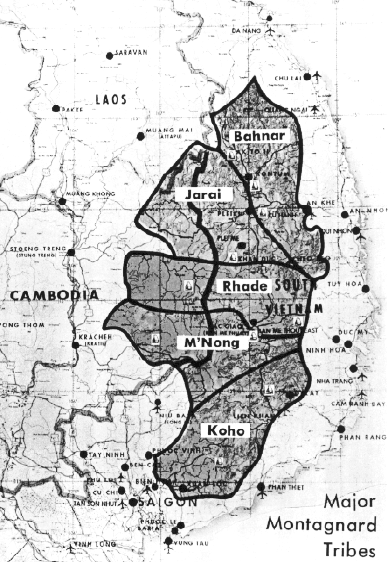
Map credit: October 1969 TYPHOON magazine
LINKS
From the Montagnard Foundation, Inc.
[Breaking News]
Information on present day Montagnard relief efforts:
[Friends of the
Central Highlands]
Dega
Photos
[Photo Gallery of S.E.A.
Indigenous People]
